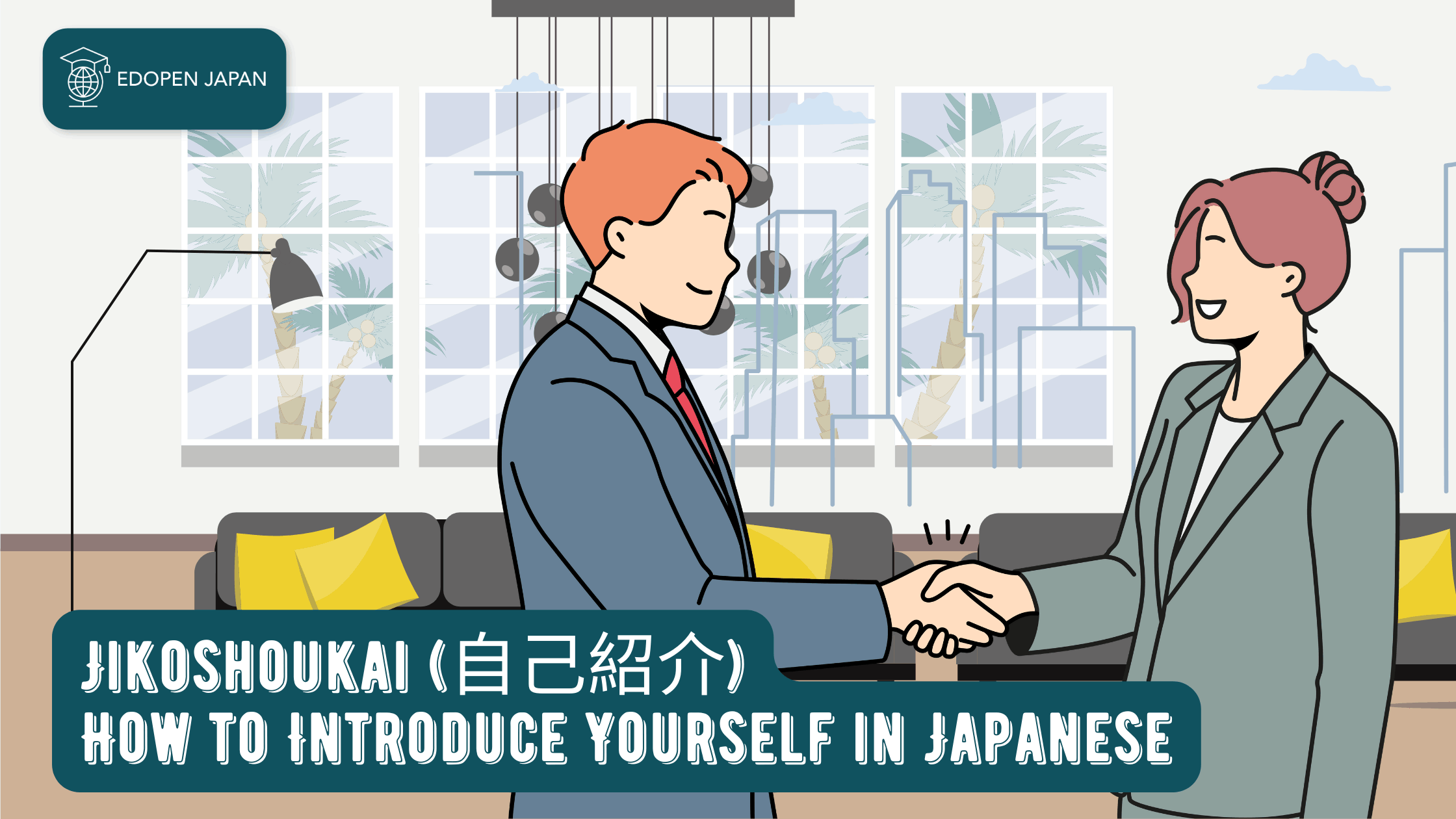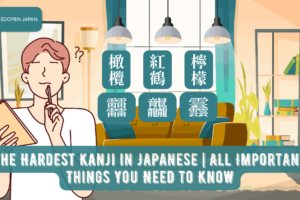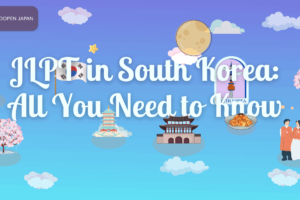Do you know how to introduce yourself in Japanese? If you are studying the Japanese language or visiting Japan for travel, school, or business purposes, you will frequently find it necessary to introduce yourself.
Whether you are a friend, colleague, student, employee, neighbor, or anyone else, proper introductions are crucial to developing meaningful relationships with others. It is important to learn how to introduce yourself in Japanese, such as the use of the phrase “My name is…” in Japanese sentences.
This article explores the ways in which you can introduce yourself in Japanese and provides some practical examples. This discussion is beneficial for various situations. Let us delve further into the topic.
In addition, if you are currently studying Japanese, it is also important to familiarize yourself with commonly used expressions in everyday life. Please refer to the following recommendations from our discussion below!
Read also:
How are You in Japanese: All You Need to Know
Japanese Honorifics: San, Chan, Kun, and Other
15 Great Ways to Say Thank You in Japanese
Contents
A Brief Overview about Jikoshoukai (自己紹介)
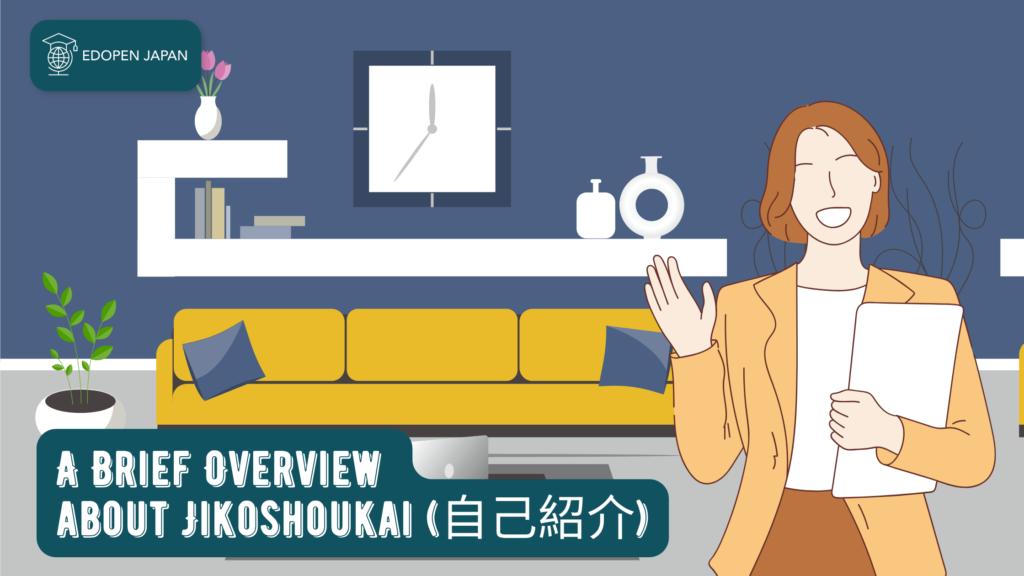
Before we delve into the basic structure for introducing oneself, let us provide some essential tips for introducing oneself to the Japanese people. When introducing yourself in Japan, you should keep some cultural aspects in mind.
Generally, it is advisable to use formal and polite language while introducing yourself and refrain from disclosing too many personal details immediately.
When introducing yourself in Japan, it’s important to note that the family name comes before the given name. For example, if your name is Kevin Smith, your introduction should begin with “Smith,” followed by “Kevin.”
Jikoshoukai (自己紹介): Self Introduction in Japanese
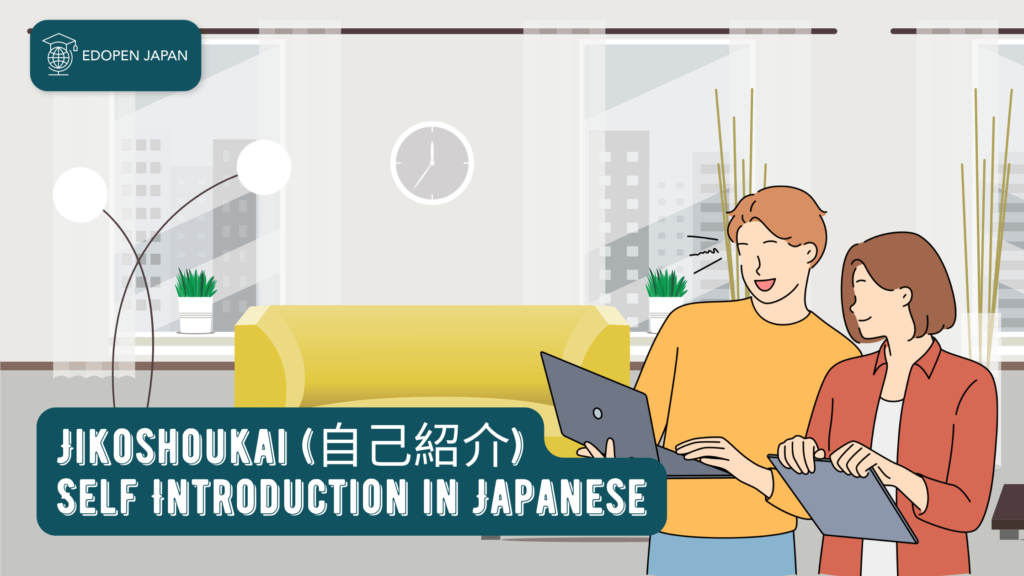
In Japanese culture, 自己紹介 (jikoushoukai) or “self-introductions” are an important step towards integrating with locals. It is similar to introducing oneself in any other culture. “Jiko (自己)” means “self” in English, and “Shoukai (紹介)” can be directly translated to “introduction.”
However, there are specific cultural differences and procedures one should follow in practice. It is important to make a good first impression, so it is important to learn how to conduct a proper self-introduction.
1. The Basic Self Introduction
After mastering basic greetings such as “Ohayou Gozaimasu” for Good Morning, “Konnichiwa” for Good Afternoon, and “Konbanwa” for Good Evening, it’s time to learn the basic “Jikoshoukai” in Japanese. Here are some useful phrases you need to know.
- はじめまして (Hajimemashite)
This means, “Nice to meet you.” Greetings to people who meet each other for the first time. Let’s talk cheerfully. - 私の名前は◯◯です。
(Watashino namaewa ◯◯desu.)
My name is ◯◯. If you have a nickname, you can say 〇〇to yonde kudasai which means “Please call me 〇〇”. Please look at the following example for more understanding. Look at the quick examples below!
Ex: 私の名前はタナカミキです。
(Watashino namaewa Tanaka miki desu)
My name is Miki Tanaka.
Ex: ミキと呼んでください。
(Miki to yonde kudasai)
Please call me Miki. - ◯◯から来ました。
(◯◯kara kimashita.)
Here, you mention your country or region you come from.
Look at the example below!
Ex: アメリカから来ました。
(America kara kimashita)
I come from Amerika.
- 私は◯◯です。
(Watashiwa ◯◯desu)
You can mention your occupation here.
Ex: 私は学生です。
(Watashiwa gakuseidesu)
I am a student.
Ex: 私はデザイナーです。
(Watashiwa dezaina-desu)
I am a designer. - よろしくお願いします!
(Yoroshiku onegai shimasu)
It means “Nice to meet you” or “How do you do”. We say it at the end of the self-introduction. You can also use it when you ask for something or at the end of an email. It’s a practical phrase that increases politeness when you add it.
2. The Other Additional Phrases for Jikoshoukai (自己紹介)
- お名前はなんですか?
(Onamaewa nandeska? )
What is your name? - 出身はどこですか?
(Shusshinwa dokodeska?)
Where are you from?
If you are asked this question, try to give the answer using the example below!
Answer:
◯◯から来ました。
○○kara kimashita)
which means “I am from 〇〇”. - お仕事はなんですか?
(Oshigotowa nandeska?
What is your occupation?
This phrase comes after introducing your occupation to others. Use the following sentence to answer!
Answer:
わたしは○○です。
Watashiwa ◯◯desu, which means “I am a 〇〇”
3. The Other Additional Phrases for Jikoshoukai (自己紹介)
- わたしは○○が好きです。
(Watashiwa 〇〇ga sukidesu. ) meaning, I like 〇〇.
Example:
わたしはすしが好きです。
(Watashiwa sushiga sukidesu.) meaning, I like sushi.
Then, In order to emphasize this expression, you can say the following sentences:
わたしは○○が大好きです。
(Watashiwa ◯◯ga daiskidesu.) meaning, I like 〇〇 very much. - あなたはどうですか?
(Anatawa doudeska?) meaning, how about you?
This phrase is used to learn more about the preferences and opinions of others. - わたしは○○に行きました。
(Watashiwa 〇〇ni ikimashita) meaning, I went to 〇〇.
This phrase is suitable for striking up a conversation with your Japanese friends, and sharing with them about the different places you have visited in Japan as well. - いっしょに○○に行きませんか?
(Isshoni 〇〇ni ikimasenka?) meaning Would you like to go to 〇〇 together?
Here, you can insert the name of the place into 〇〇.
Please look at the following example to get a deeper understanding!
Ex 1: いっしょにすし屋に行きませんか?
(Isshoni sushiyani ikimasenka?)
Meaning, would you like to go to the sushi restaurant together?
Ex 2: いっしょに新宿に行きませんか?
(Isshoni shinjukuni ikimasenka?)
Meaning, would you like to visit Shinjuku together?
The Japanese Cultural Aspect Regarding Jikoshoukai (自己紹介)
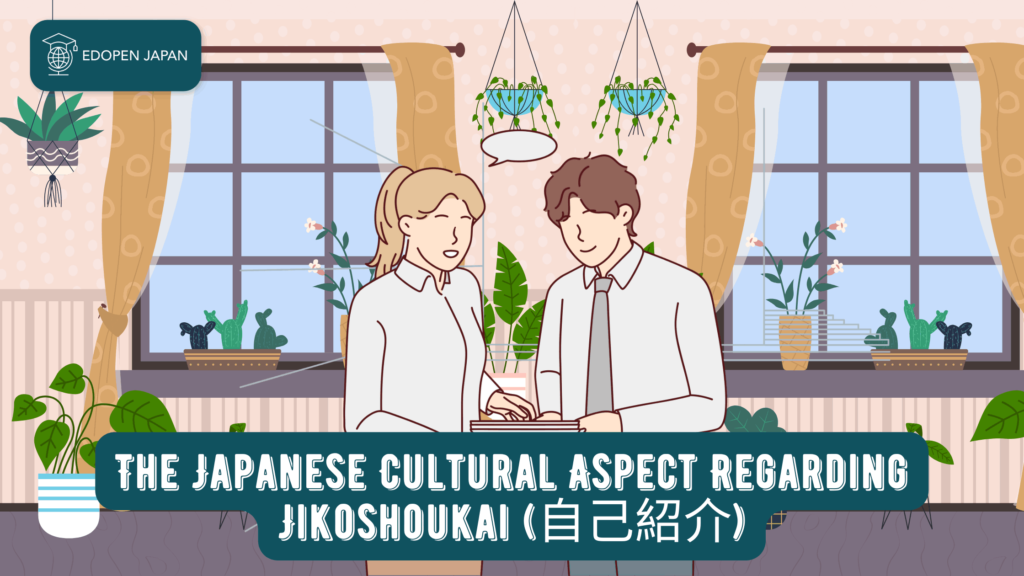
While knowing the appropriate words to use is helpful, it is equally important to use them correctly. It is important to be aware of cultural differences when introducing yourself in Japanese. Attention to detail in your “Jikoshoukai” can give you a social advantage when meeting new Japanese acquaintances as these nuances hold subtle but significant meaning.
- First name and Family name
In Japanese, people usually introduce themselves by their family names or full names. When they introduce their full name, the family name comes first, and the first name comes second. - Occupation
In English, when you asked what you do for work, you give a summary of your job, or the name of your profession. In Japan, it’s common to answer only, ” Kaishain-desu” (I’m an office worker, or I work for a company.)
However, if you introduce yourself to someone in a business setting, mention your company in your self-intro. Example: Toyotaのコウイチと 申します。(Toyota no Kouichi to moushimasu.) Means, I’m Koichi from Toyota. - Don’t talk about yourself too much
Japanese people sometimes say lightly self-deprecating things as a form of humility, but it’s usually followed by something positive. Example: 至らない点が多いかもしれませんが、よろしくおねがいします。(Itaranaitenga ooikamoshiremasenga, yoroshikuonegaishimasu)This means, I might have many flaws, but I’ll do my best so please be kind to me.
However, it is commonly observed that Japanese individuals tend to keep their strengths to themselves. There is no need to state anything of that sort. It’s acceptable to share a couple of your strengths, but providing a list of all your extraordinary abilities may irritate others.
- Bowing VS Handshake
It is customary not to engage in handshakes in Japan, particularly if your status is equal to or lower than that of your counterpart. Handshakes between equals are acceptable in Japan. Instead of the traditional handshake, Japanese custom dictates that you bow after greeting. Bowing, or お辞儀 (ojigi), is a sign of respect in Japan. As a general rule, always bow at least 15 degrees and remember to keep your hands in front of you.
The Basic “Jikoshoukai (自己紹介)” Practice
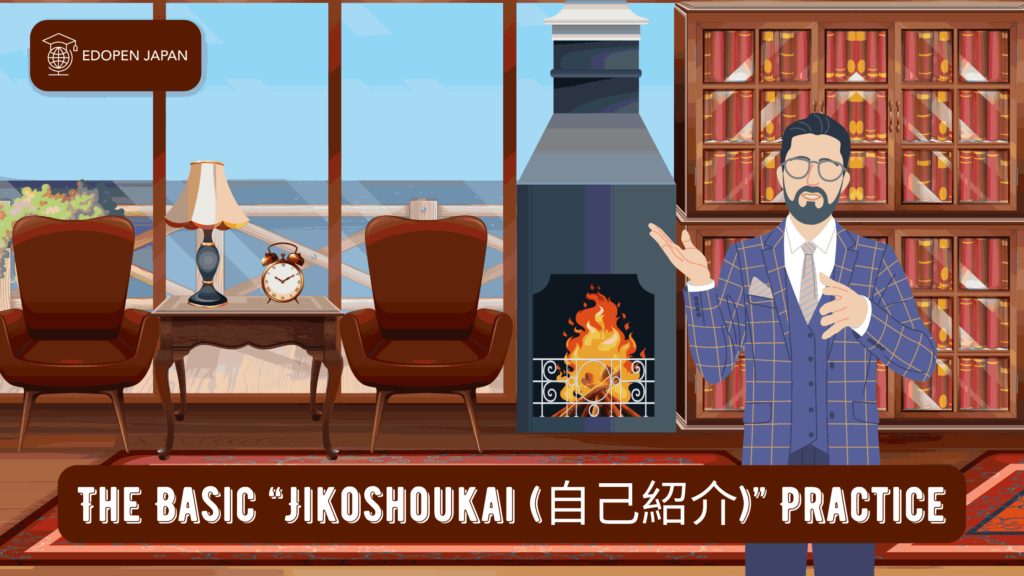
Maybe you’ve been giving your Japanese self-introduction for an extended period, reciting the same three phrases repeatedly. Perhaps you have already read this manual and comprehended the fundamentals. It’s time to enhance! The following are examples of expressions you can integrate into your typical “Jikoshoukai” to add piquancy and make your self-introduction unforgettable.
1. Say “はじめまして (nice to meet you)”
Earlier we learned how to use “Hajimemashite (はじめまして)” (nice to meet you, how do you do). Here’s a few ways to add to this set phrase.
| 1. こんにちは。はじめまして。 (Konnichiwa Hajimemashite) Means, Hello. Nice to meet you. |
| 2. みなさん、こんにちは。はじめまして。 (Minasan, Konnishiwa Hajimemashite.) Means, Hello everyone, nice to meet you. |
2. Mention your “name”
For formal situations, it is recommended to use both your first and last names when introducing yourself. In more casual situations, it is common for Japanese individuals to use only their family name. Here are a few different ways to introduce yourself, listed in ascending order of politeness. Look at the following example for further understanding!
| Style | Example |
| 1. Casual Style | マイケルです。 (Michael desu) Means, I am Michael. 私の名前はマイケルですが、マイクって呼ばれています。 Watashino namae wa Michael desuga, Mike tte yobareteimasu). Means, My name is Michael, but most people call me Mike. |
| 2. Polite | マイケルといいます。 (Michael to iimasu) which means I am Michael. |
| 3. Very Formal | マイケルと 申します。 (Michael to moushimasu) means, I am Michael. |
3. Say “please be kind to me”
When introducing oneself in Japan, it is common practice to use a phrase that requests a favorable impression, such as “Please treat me kindly” or “Please remember me favorably.” Once the standard greeting of “Yoroshiku onegaishimasu” is mastered, one can then explore more casual or formal variations. Below are variations arranged by level of politeness.
| Style | Example |
| 1. Casual | よろしく。 (Yoroshiku) どうぞよろしく。 (Douzo Yoroshiku) |
| 2. Polite | よろしくお願いします。 (Yoroshikuonegaishimasu) |
| 3. Polite or Business | どうぞ、よろしくお願いします。 (Douzo yoroshikuonegaishimasu) よろしくお願い致します。 (Yoroshikuonegaiitashimasu) よろしくお願い申し上げます。 (Yoroshikuonegaimoushiagemasu) |
4. Say “where you are from”
“Shusshin (出身)” refers to a person’s place of birth or upbringing, rather than their current location. “Mairu (参る or まいる)” is a more modest alternative to “Kuru (来る)” or “Iku (行く)”. Thus, when discussing one’s place of origin in the phrase “アメリカから参りました,” using “Mairu (参る)” conveys humility and should be used appropriately.
| Style | Example |
| 1. Casual | アメリカの出身です。 (America no shussin desu) アメリカから 来ました。 (America kara kimashita) The above 2 phrases means I am from America. |
| 2. Formal | アメリカから 参りました。 (America kara mairimashita) I am from America. |
5. Say “your school: Daigaku (大学) or University/College”
School, from elementary through university, plays a significant role in Japanese culture. Expect to be asked about your alma mater and area of study. Alternatively, preempt the inquiry by incorporating the information into your “Jikoshoukai.” Look at the following example!
- わたしは Ⓐ 大学 Ⓑ 学部 Ⓒ科 出身です。
Watashiwa Ⓐ Daigaku Ⓑ Gakubu Ⓒ Ka Shusshinn desu.
This means I graduated from the Ⓒ department of the faculty of Ⓑ of Ⓐ University.
- わたしは Ⓐ 大学 Ⓑ 学部 Ⓒ科 の学生です。
Watashiwa Ⓐ Daigaku Ⓑ Gakubu Ⓒ Ka no Gakusei desu.
This means I am a student of the Ⓒ department of the faculty of Ⓑ of Ⓐ University.
6. Mention “your work”
A quick grammar note: some of the Jikoshoukai example sentences use the continuous state conjugation of “Suru (する)” which is “Shiteimasu (しています)”. To enhance politeness, replace “Shiteimasu (しています)” with “Shiteorimasu (しております)”. This simple switch will enable you to convey your work situation in a professional manner to CEOs and presidents.
| Style | Example |
| 1. Casual | Toyotaでマネージャーをしています。 (Toyota de manager wo shiteimasu.) I’m the chief editor of Toyota. 私は 英語の 教師です。 (Watashiwa eigono kyoushi desu.) I’m an English teacher. |
| 2. Formal | 私は東小学校で働いています or 働いております。(Watashiwa Higashishougakkoude or hataraiteimasu or hataraiteorimasu). This means I’m working at East Elementary School. |
7. Say “where you live”
In the Japanese we call it, “Sumu (住む or すむ)” which means live.
| 1. 東京に 住んでいます。 (Tokyo ni sundeimasu.) I live in Tokyo. |
| 2. 東京駅の ちかくに住んでいます。 (Tokyo eki no chikakuni sundesimasu) I live near Tokyo station. |
The Conversation Tips for Jikoshoukai (自己紹介)
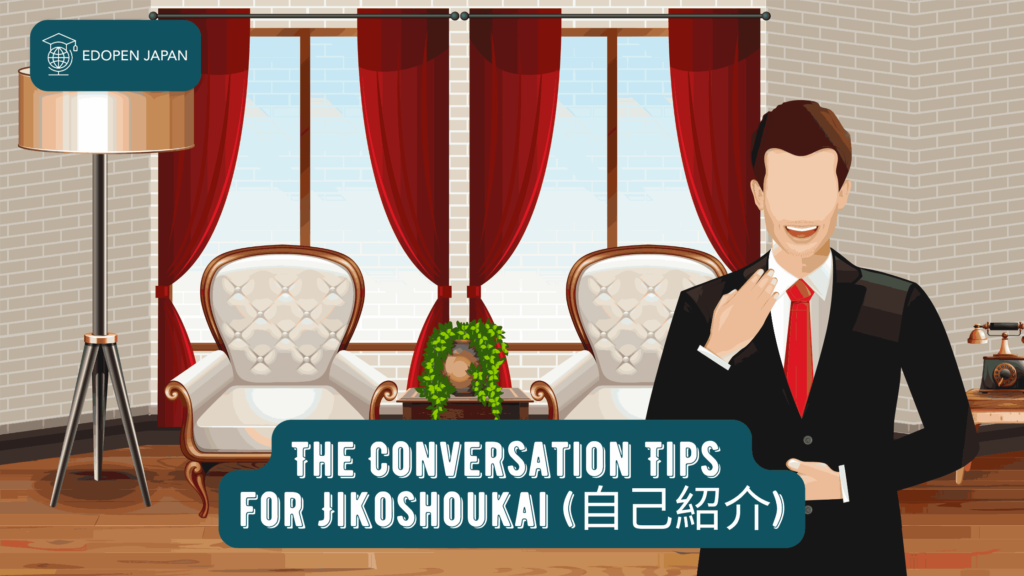
Introduce yourself, what you like to eat most and what your hobbies are. Please look at the following points!
| 1. When you say something you like or something you like | わたしは、○○が好きです。 Watashi ha ○○ ga suki desu. Means, I like ○○. |
| 2. Hobbies | わたしの趣味は、○○です。 Watashi no syumi ha ○○ desu. Means, My hobby is 〇〇. |
| 3. When you say what you are good at | わたしは、○○ができます。 (Watashi wa ○○ ga dekimasu. Means, I can ○○. |
| 4. Introduce your family | わたしの家族は、○人です。 Watashi no kazoku ha ○nin desu. Means, My family are 〇. Insert your family number. ○○と○○と○○がいます。(○○ to ○○ to ○○ ga imasu.) Means, I have ○○, ○○ and ○○. (Insert your family such as mother, father, and sister). |
| 5. Numbers | 誕生日は、○年○月○日です。 Tanjoubi ha ○○nen ○○gatu ○○nichi desu. Means, My birthday is ~. ○○才です。 ○○sai desu. Means, I am ○○years old. |
The Useful Words for Jioshoukai (自己紹介) to Remember!

1. Occupation
| Japanese | Romaji | English |
| 会社員 | Kaishain | Company Employee |
| エンジニア | Enjinia | Engineer |
| 医師 | Ishi | Doctor |
| 看護師 | Kangoshi | Nurse |
| 教師 | Kyoushi | Teacher |
| 弁護士 | Bengoshi | Lawyer |
| 営業 | Eigyou | Sales |
| 受付 | Uketsuke | Reception |
| 学生 | Gakusei | Student |
| 主婦 | Shufu | House wife |
| アルバイト | Arubaito | Part-time job |
2. Place
| Japanese | Romaji | English |
| 会社 | Kaisha | Company |
| 学校 | Gakkou | School |
| 病院 | Byouin | Hospital |
| 工場 | Koujyou | Factory |
| カフェ | Cafe | Cafe |
| ホテル | Hoteru | Hotel |
| 居酒屋 | Izakaya | Pab/Bar/Izakaya |
| 銀行 | Ginkou | Bank |
How was that? If you have the opportunity to introduce yourself in Japanese, there are many ways to do so. Saying a few phrases can lead to great conversations in the Japanese community and help you make lots of friends.
Summarize
To sum up this article, please let us recall again the above information in the following points! Please review them together here!
- “Jiko” refers to the English word “self” while “Shoukai” can directly be translated to “introduction. You must be careful to use a formal and polite Japanese style and not tell too much about yourself or reveal too many personal details.
- In Japan, the family name always comes first. There are a lot of “Jikoshoukai” phrases that go beyond the basic introduction, so make the most of them. It’s better to improve the advanced self-introduction when you’ve mastered the basic self-introduction so that you can converse even better.

